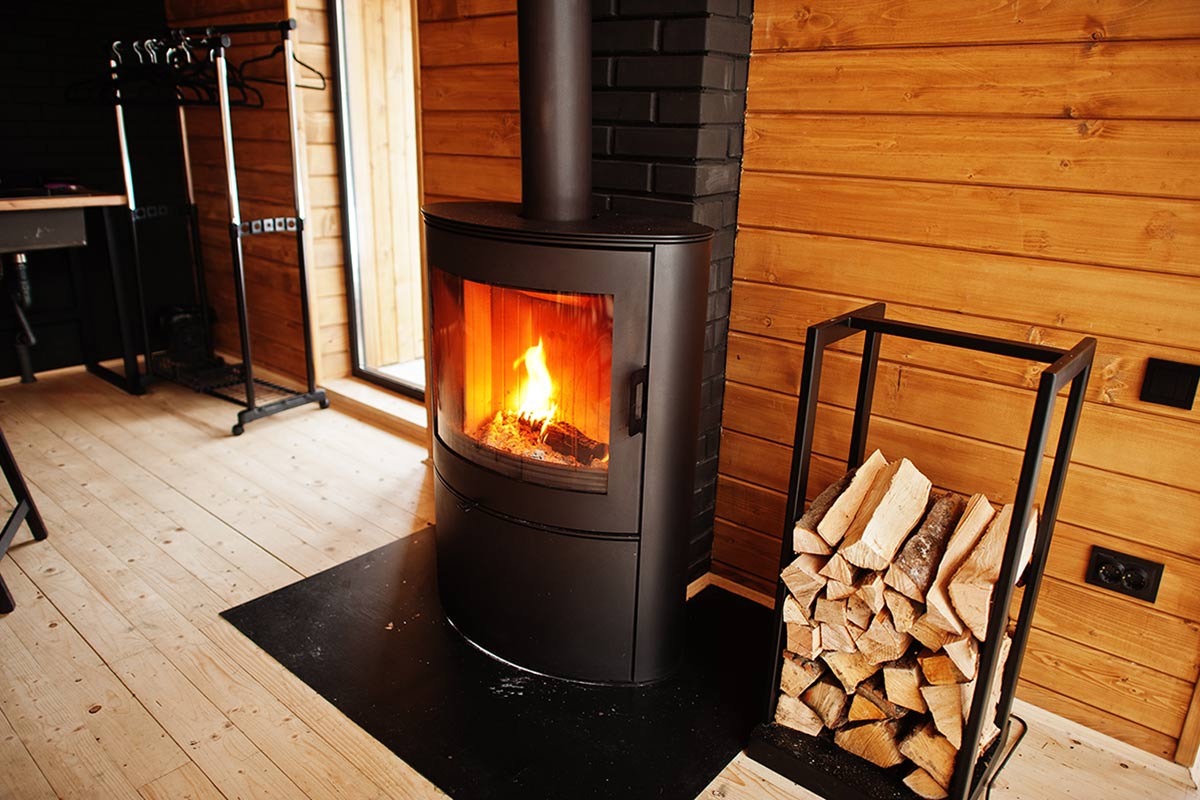Gas fireplaces have become increasingly popular in modern homes due to their convenience, energy efficiency, and aesthetic appeal. However, before installing a gas fireplace, it’s essential to understand the ventilation requirements, particularly regarding chimneys.
This comprehensive article aims to provide detailed information about the central question: “Do gas fireplaces need a chimney?”
We’ll also explore the significance of hearths and other crucial considerations related to gas fireplace installations.
Why Do Gas Fireplaces Need a Chimney?
Gas fireplaces come in different types, each with unique ventilation needs. Vented gas fireplaces, also known as traditional gas fireplace, need a chimney or a venting system to expel combustion byproducts outside.
Chimneys serve as the primary means of safely removing harmful gases, such as carbon monoxide, from the living space. They also ensure indoor air quality and compliance with building codes, making them an essential component of gas fireplace installations.
Do Gas Fireplaces Need A Hearth?
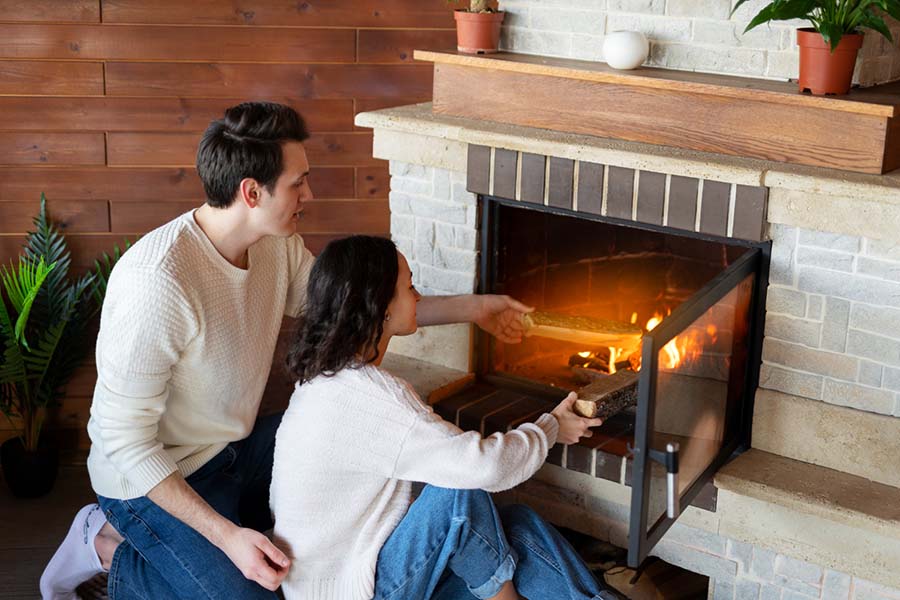
Yes, gas fireplaces typically need a hearth, though there are some exceptions depending on the specific model and local building codes. The hearth serves as a crucial component in most newer gas appliances and fireplace installations, both functionally and aesthetically.
Functionally, the hearth acts as a safety feature, creating a buffer zone around the fireplace opening to reduce the risk of accidental fires and burns. It provides a non-combustible surface that prevents sparks or embers from reaching nearby flammable materials, ensuring enhanced safety for the surrounding area.
Aesthetically, the hearth complements the overall design of the fireplace, adding a touch of elegance and style to the room. However, the specific hearth requirements can vary based on the type and size of the gas fireplace, as well as local building codes.
Homeowners should consult the manufacturer’s guidelines and their local building regulations to determine the appropriate dimensions, materials, and clearance distances needed for the hearth to ensure a safe and compliant gas fireplace installation.
Does A Natural Gas Fireplace Need A Chimney?
Natural gas fireplaces are a popular option due to their clean-burning nature and convenience. Vented natural gas fireplaces typically require a chimney or a venting piping system, similar to traditional gas fireplace.
Chimneys are necessary for proper ventilation and the safe removal of combustion byproducts from the home.
Does A Direct Vent Gas Fireplace Need A Chimney?
Direct vent gas fireplaces offer an alternative option for homeowners. They use a sealed combustion system b vent gas fireplace, drawing air from the outside for combustion and expelling combustion byproducts directly through direct vent system a dedicated venting pipe.
As a result, direct vent gas fireplaces do not require a traditional chimney. Instead b direct vent gas fireplace is, they utilize a specialized venting system, allowing for more flexibility in installation.
What Is The Purpose Of A Hearth?

The hearth serves a multifunctional role in the context of traditional fireplaces everywhere, carrying both practical and aesthetic significance. Primarily, the purpose of a hearth is to ensure safety and protection.
Functionally, the hearth acts as a non-combustible barrier that surrounds the wood burning fireplace or gas fireplace opening, preventing sparks, embers, and heat from reaching nearby flammable materials, such as carpets, flooring, or furniture.
This feature reduces the risk of accidental fires and burns, making the hearth an essential safety component.
Additionally, the hearth provides a platform for setting firewood, adding an extra layer of protection to the floor beneath the fireplace. Aesthetically, the hearth enhances the overall appearance of the masonry fireplace, creating a visually appealing focal point in the room.
Overall, the hearth’s purpose goes beyond aesthetics, combining safety and aesthetics to create a functional and attractive element within the fireplace setup.
Do Ventless Gas Fireplace Need A Chimney?
No, ventless gas fireplaces do not require a chimney for installation. These innovative fireplaces operate without any external venting system, making them a convenient option for homeowners without an existing chimney or those seeking a chimneyless setup.
Ventless gas fireplaces are designed to burn gas more efficiently, resulting in minimal emissions and combustion byproducts. The combustion process is carefully engineered to ensure that the fire consumes most of the gases, producing primarily water vapor and carbon dioxide.
This efficient burning eliminates the need for a chimney, allowing ventless gas fireplaces to be installed in various indoor spaces.
Do I Need A Flue Liner For My Gas Fireplace?
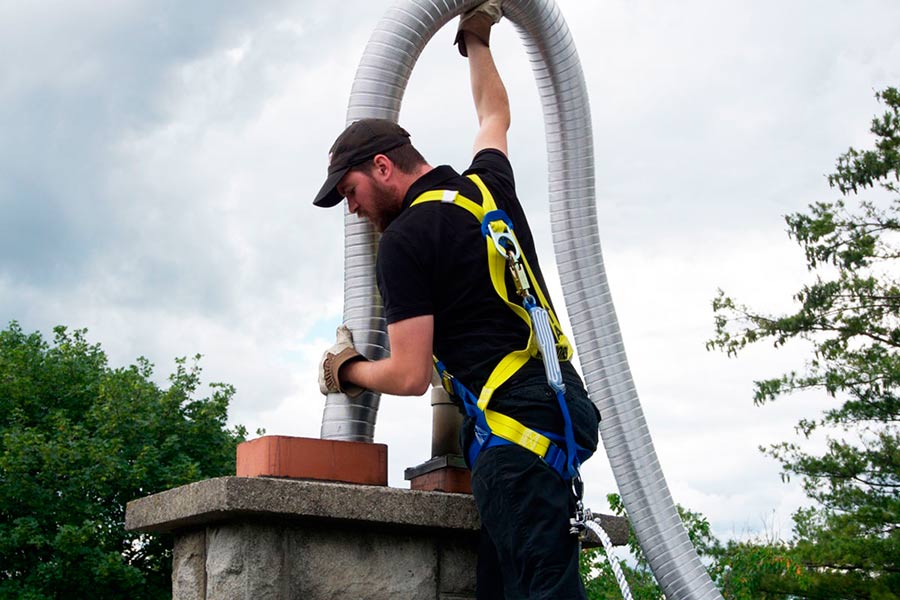 Flue liners are an essential component for certain gas fireplace installations, especially when connecting either gas to an already existing masonry fireplace or chimney.
Flue liners are an essential component for certain gas fireplace installations, especially when connecting either gas to an already existing masonry fireplace or chimney.
Flue liners protect the chimney walls from corrosive combustion gases and help maintain proper draft and ventilation.
Can You Install a Gas Fireplace without a Chimney?
It is possible to install a gas fireplace without a chimney, thanks to advancements in ventless gas fireplaces technology.
Ventless fireplaces, also known as vent-free fireplaces, offer a chimneyless alternative for homeowners seeking the warmth and ambiance of a fireplace without the need for traditional venting systems. A ventless fireplace operates by drawing in combustion air from within the room and efficiently burning the gas, resulting in minimal emissions.
The combustion process is carefully engineered to ensure that the fire consumes most of the byproducts, producing primarily water vapor and carbon dioxide.
However, it’s crucial to note that a ventless gas fireplaces are a subject to strict safety regulations and should only be installed in well-ventilated areas and in compliance with local building codes.
Homeowners interested in a ventless gas fireplace should consult with a professional installer and ensure that their living space meets the necessary safety requirements for a ventless gas fireplace installation.
Flueless Gas Stoves
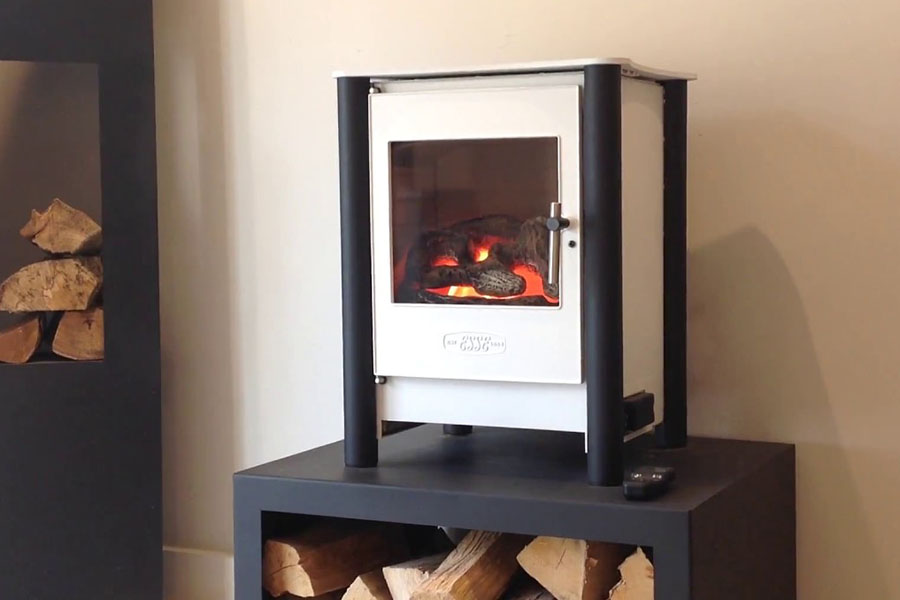
Flueless gas stoves offer a unique solution for heating spaces without traditional chimneys. These stoves use a catalytic converter or oxygen depletion sensor to ensure safe indoor air quality, making them suitable for well-ventilated areas.
Wood Burning Fireplaces vs Gas Fireplaces
Wood-burning fireplaces and gas fireplaces are two popular options for adding warmth and ambiance to homes. While both types of fireplaces offer unique benefits, they have distinct differences that homeowners should consider when making a choice.
Wood-burning fireplace provides a classic and nostalgic experience, complete with the crackling sound and aroma of burning wood. However, they require a chimney or venting system to vent the smoke and byproducts safely.
On the other hand, gas fireplaces offer convenience and efficiency, as they can be easily controlled with a switch or remote, and they produce minimal emissions. Additionally, newer gas appliances and fireplaces offer more flexible venting options, allowing for installation in a wider range of spaces.
Ultimately, the decision between wood-burning and gas fireplaces depends on personal preferences, available resources, and the desired level of maintenance and convenience.
Which Gas Fireplaces Need A Hearth?
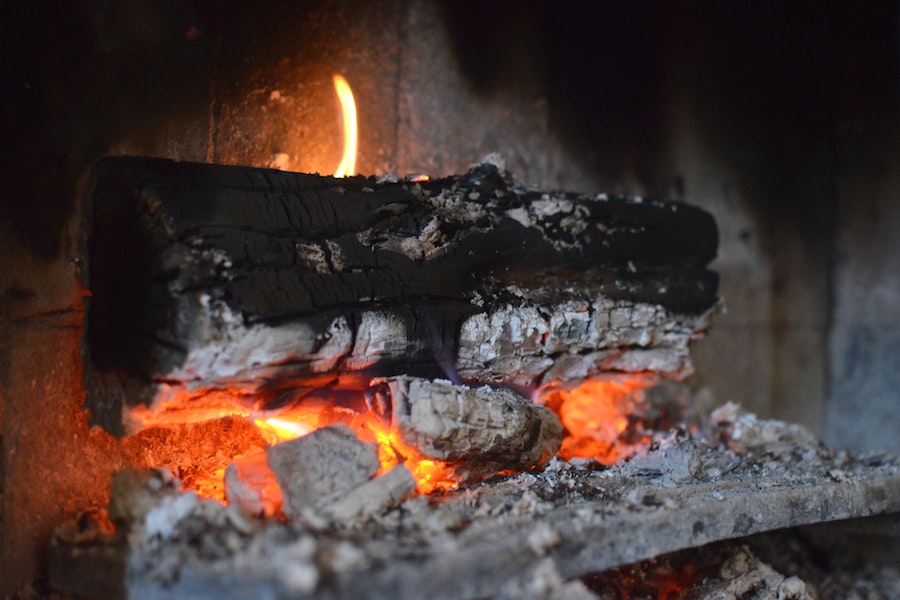
Most gas fireplaces may require a hearth for specific reasons. Homeowners should consult the manufacturer’s guidelines and local building codes to determine the hearth requirements for their chosen gas fireplace.
Direct Vent Fireplaces
Direct vent gas fireplaces are a popular choice for homeowners seeking an efficient and safe heating option. These fireplaces operate with a sealed combustion and pipe venting system only, meaning they draw air from the outside for combustion and expel combustion byproducts directly outside through a specialized venting pipe system.
This setup ensures that the indoor air quality remains unaffected, as no air from inside the home is used for combustion. The sealed combustion system also prevents any potential backdrafts or drafts from affecting the flames, making direct vent fireplaces a reliable and secure choice.
Moreover, the absence of a traditional chimney requirement simplifies the installation process, as the natural vent-ing system can be directed through a wall or roof, offering flexibility in positioning the gas fireplace within the home’s layout.
B-Vent (Natural) Fireplaces
B-vent gas fireplaces, also known as natural vent gas fireplaces, utilize a dedicated venting system to safely move gas log remove combustion byproducts. These or b vent gas fireplaces require a chimney-like structure that extends vertically from the fireplace to exhaust the combustion gases outside the home.
Unlike direct vent fireplaces, B-vent fireplaces draw combustion air from inside the home, which means the indoor air quality can be slightly affected by the combustion process. However, B-vent fireplaces remain a popular choice in certain situations, especially when a traditional chimney is already present in the home.
The chimney-like structure adds a classic touch to the fireplace’s appearance and provides a natural draft to facilitate the flow of gases outside.
If homeowners are considering a B-vent fireplace, they should make sure that their existing chimney meets safety standards and that they properly maintain it for efficient ventilation and the safe removal of combustion byproducts.
Can You Use a Vented Fireplace in Your Chimney?
For homeowners with an existing chimney, it is possible to use a vented gas fireplace. However, compatibility and safety considerations must be carefully assessed.
Installing a vented gas fireplace insert into an existing chimney requires proper venting and professional installation to ensure efficient and safe operation.
Finding the Ideal Gas Fireplace for Your Home
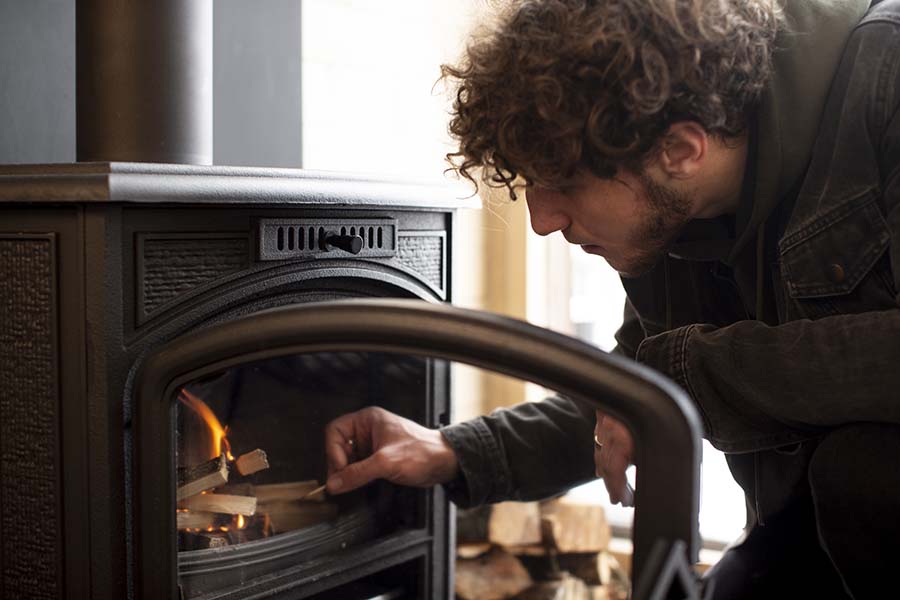
Finding the ideal gas fireplace for your home involves thoughtful consideration of several factors. First, assess the heating needs of the space where you plan to install the fireplace. Take into account the room size, insulation, and local climate to determine the appropriate heating capacity.
Next, choose the type of gas fireplace that best suits your preferences and installation requirements. Traditional vented fireplaces are a popular choice for those with existing chimneys, while vent-free or even direct venting options offer more flexibility for installations without a chimney.
Consider the aesthetics of your home and select a fireplace frame design that complements your interior décor. Additionally, prioritize safety features such as a safety screen, automatic shut-off, and carbon monoxide detector.
Energy efficiency is also essential, so look for gas fireplaces with high efficiency ratings to save on energy costs. Always opt for professional installation to ensure proper venting and compliance with safety standards.
By carefully evaluating these aspects vent free fireplace and seeking advice from experts, you can find the perfect gas fireplace to create a cozy and inviting ambiance in your home.
What Are The Requirements For A Gas Fireplace Hearth?
Compliance with regulations and building codes is essential when installing a gas fireplace hearth. Specific requirements may vary depending on the jurisdiction and the type of gas fireplace.
Common considerations include hearth material, dimensions of fireplace vents, and clearance distances from the fireplace opening.
Floor Distance From Combustibles
To ensure safety, all gas fireplace inserts must adhere to recommended clearance distances from combustible materials, such as walls and furniture. Understanding these requirements helps prevent potential hazards and ensures safe and compliant gas fireplace installations.
Conclusion
In conclusion, understanding the chimney requirements and other aspects of gas fireplace installations is essential for a safe and enjoyable experience.
By comprehending the needs of different gas fireplace types, the significance of hearths, and adhering to gas fireplace safely guidelines, homeowners can confidently choose the best gas fireplace solution for their homes, ensuring both comfort and safety.
Properly installed and vented gas fireplaces can provide years of warmth and ambiance while enhancing the overall living space.

